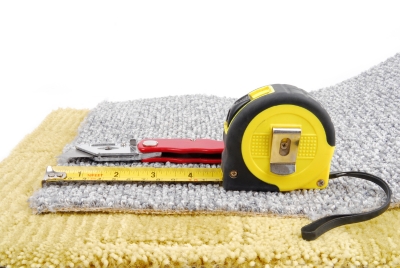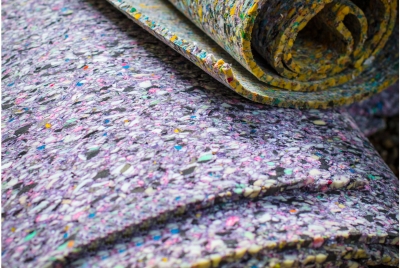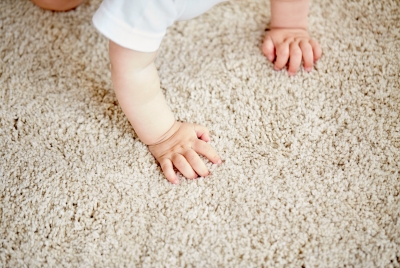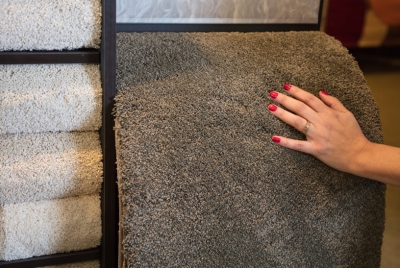Discovering Carpet Types
By Gina Bonk,
Selecting the perfect carpet type is vital in putting the finishing touches on your home. A well-chosen carpet can enhance the coziness and charm of any room. It’s incredible how even a subtle carpet choice can contribute to a room’s character. Different types of carpets serve different purposes, so let’s dive into exploring the various carpet types available to you.
Consider Your Space
Before delving into the world of carpet types, take a moment to think about the room you intend to carpet. The room’s function should be your guiding star in this decision-making journey. Factors to ponder include:
- The amount of foot traffic the room will endure.
- Who will be frequenting the room.
- How the room will be utilized.
- How the room will harmonize with the rest of your home’s aesthetic.
For instance, the ideal carpet for a family room might not be the best choice for a home office, just as it may differ from what’s perfect for a basement. A family room typically sees more hustle and bustle than a home office, thus requiring a more resilient carpet. On the other hand, a home office might be the perfect place to showcase a bold carpet color or pattern. And let’s not forget the importance of considering room size; what works in a cozy den might not be the best option for a grand living room.
Pro tip: When it comes to carpeting stairs, opt for a durable option that can resist snagging, abrasions, and dirt. Low-pile carpets are a great choice, especially since they make cleaning those hard-to-reach spots a breeze.
Carpet Piles and Face Weight
 When assessing the quality and longevity of a carpet, two key factors to consider are pile height and face weight.
When assessing the quality and longevity of a carpet, two key factors to consider are pile height and face weight.
Pile height refers to the height of the carpet fibers, excluding the backing. Carpets typically fall into three categories: low pile, medium pile, and high pile.
- Low-pile carpets feature short, dense fibers that are simple to clean and highly durable, making them ideal for high-traffic areas.
- Medium-pile carpets strike a balance between comfort and ease of maintenance. They’re softer to the touch than low-pile carpets and are suitable for areas where moderate foot traffic is expected.
- High-pile carpets boast long, plush fibers that offer luxurious cushioning underfoot. While they add warmth and coziness to a space, they require more frequent cleaning due to their tendency to collect dust and debris.
When it comes to face weight, think of it as the carpet’s equivalent to thread count in bedding – the higher, the better. However, comparing face weights is only useful when comparing similar types of carpets.
Carpet Fiber Materials
Carpet fibers typically consist of synthetic materials or blends of synthetic and natural fibers. Each type of fiber has its own set of pros and cons, so let’s break them down:
- Nylon: Nylon is a popular choice for homes with pets due to its resistance to stains, fading, and crushing. It is known for its strength and durability.
- Triexta: Similar in appearance to nylon, triexta offers added softness and natural resistance to stains and moisture.
- Polyester: Polyester fibers are stain-resistant and come in vibrant color options, although they may fade when exposed to sunlight.
- Wool: A traditional and luxurious option, wool is durable but requires proper cleaning and maintenance to prevent damage from stains and cleaning chemicals.
- Olefin: Affordable and durable, olefin is an excellent choice for high-traffic areas.
Indoor Carpet Styles and Construction
Indoor carpets come in three main styles, each catering to different needs and aesthetics:
- Texture Carpet: Also known as twist carpet, texture carpet features tightly twisted yarns that resist dirt absorption, making it a popular choice for family rooms and bedrooms.
- Berber Carpet: Characterized by its looped construction, Berber carpet is highly resistant to stains and is outstanding for rooms with heavy foot traffic, such as hallways and basements.
- Pattern Carpet: A blend of texture and Berber constructions, pattern carpet offers a sophisticated appearance and is suitable for various rooms in the home.
Carpet Padding
 Once you’ve settled on the type and construction of your carpet, it’s time to choose the appropriate carpet padding. Carpet padding provides cushioning underfoot, insulation, noise reduction, and extends the life of your carpet. Thicker padding offers greater comfort and durability, but review the manufacturer’s recommendations to ensure compatibility with your chosen carpet style.
Once you’ve settled on the type and construction of your carpet, it’s time to choose the appropriate carpet padding. Carpet padding provides cushioning underfoot, insulation, noise reduction, and extends the life of your carpet. Thicker padding offers greater comfort and durability, but review the manufacturer’s recommendations to ensure compatibility with your chosen carpet style.
Pro tip: If you’re installing carpet tiles, you can skip the carpet pad altogether, as the padding is already incorporated into the tiles.
With so many carpet types, finding the ideal carpet for your home is an exciting endeavor. Whether you’re looking for durability, comfort, or style, there’s a carpet out there to suit your needs. So why wait? Visit your nearest Creative Carpet & Flooring store today to explore our wide selection of carpet samples and get expert advice on choosing the ideal flooring for your home. With our help, you’ll have your dream carpet installed in no time!


